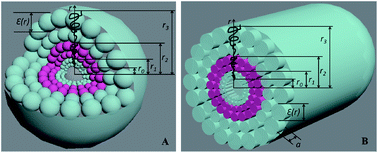Modeling and self-assembly behavior of PEG–PLA–PEG triblock copolymers in aqueous solution†
Abstract
A series of poly(ethylene glycol)–polylactide–poly(ethylene glycol) (PEG–PLA–PEG)

* Corresponding authors
a
Max Mousseron Institute on Biomolecules, UMR CNRS 5247, University Montpellier I, 34093 Montpellier, France
E-mail:
lisuming@univ-montp1.fr
b Centre de Biochimie Structurale, INSERM U1054/CNRS UMR 5048, 29 rue de Navacelles, 34090 Montpellier, France
A series of poly(ethylene glycol)–polylactide–poly(ethylene glycol) (PEG–PLA–PEG)

 Please wait while we load your content...
Something went wrong. Try again?
Please wait while we load your content...
Something went wrong. Try again?
X. Wu, S. Li, F. Coumes, V. Darcos, J. Lai Kee Him and P. Bron, Nanoscale, 2013, 5, 9010 DOI: 10.1039/C3NR02899B
To request permission to reproduce material from this article, please go to the Copyright Clearance Center request page.
If you are an author contributing to an RSC publication, you do not need to request permission provided correct acknowledgement is given.
If you are the author of this article, you do not need to request permission to reproduce figures and diagrams provided correct acknowledgement is given. If you want to reproduce the whole article in a third-party publication (excluding your thesis/dissertation for which permission is not required) please go to the Copyright Clearance Center request page.
Read more about how to correctly acknowledge RSC content.
 Fetching data from CrossRef.
Fetching data from CrossRef.
This may take some time to load.
Loading related content
